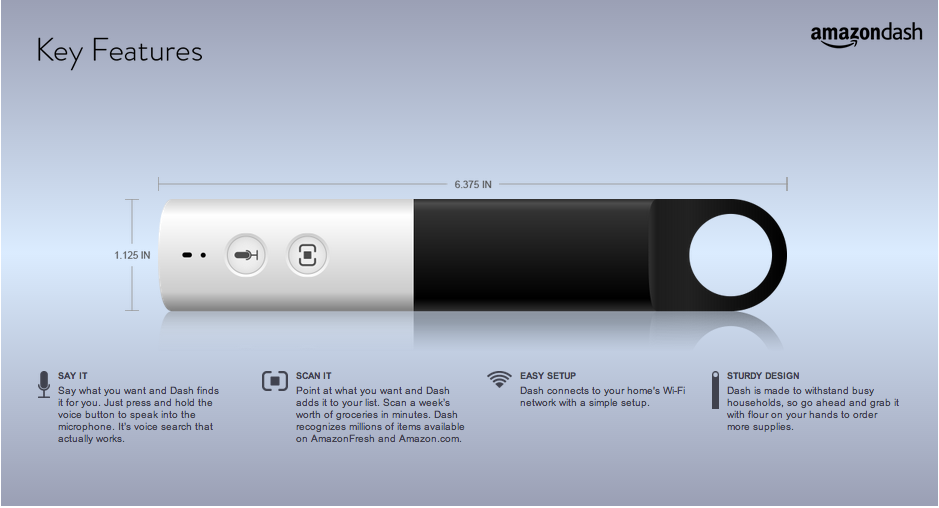When it comes to applying pressure to its competitors, Amazon keeps its foot on the pedal. In the past week, the company has introduced two new services with supply chain and logistics implications.
First, as reported in the Wall Street Journal, Amazon is now allowing customers to use its Amazon Lockers for returns. Here’s a screenshot of the four-step process from Amazon’s website:

Packages have to be smaller than 12x12x12 inches, and customers have to drop off the package at the assigned locker within one business day of initiating the return process.
E-commerce returns are a costly problem for retailers, with return rates as high as 30 percent for some items like apparel. Making the return process easy and convenient for consumers, which is what Amazon is doing here, is very important from a customer service and experience perspective. But does this create any advantage for Amazon relative to brick-and-mortar retailers? I don’t believe so. Brick-and-mortar retailers have their own easy and convenient drop-off points for returns: stores. And studies have shown that consumers who order products online and return them at stores spend an additional 18 percent more while at the store; the same is true for consumers who pick up online purchases at a store. Simply put, in-store returns and pick-ups can drive additional sales, so I believe brick-and-mortar retailers actually have the advantage here.
The real opportunity for cost savings is to prevent returns from occurring in the first place by providing customers with more detailed and accurate product information during the shopping process and by packaging items better to prevent damage (among other things). The other real opportunity for cost savings and competitive differentiation is managing the reverse logistics process — that is, everything that happens after the order is returned — more efficiently and effectively than the competition.
Also this week, Amazon introduced Amazon Dash, a device that lets you scan product barcodes or speak the names of goods into a microphone to log orders to your AmazonFresh grocery delivery account. Below is a screenshot of the device from the Amazon website, along with a promotional video.

Amazon Dash is available “by invitation only” to AmazonFresh customers in San Francisco, Los Angeles, and Seattle.
Here are some of my initial thoughts:
- Your house is now a node in the supply chain, and everyone who lives there is an inventory and replenishment manager.
- Barcode scanners and voice recognition technology have been used in warehouses for a long time to manage inventory and logistics processes. Now the technology is in the hands of consumers. This is the “consumerization of IT” in reverse.
- Why not use a smartphone app instead of a separate device? While I like the design of the Amazon Dash device, I can see it joining the television remote control in the Internet of Lost Things.
The idea here is not new. Last year, for example, LG announced a smart fridge that connects to the Internet via Wi-Fi and users can order groceries online using an embedded LCD screen on the door. And barcode scanners for smartphones have been around for a while too. So, is Amazon Dash simply a better mousetrap? Maybe, but here’s the main challenge Amazon and other online grocers face — at least with my wife, who’s the Chief Logistics Officer at our house. I showed her the Amazon Dash video and she thought it was cool, but it doesn’t fully address her shopping requirements. She goes to various stores to buy what she needs for the house: Trader Joe’s, Whole Foods, Shaw’s, CVS, and BJ’s. She shops at each store for different reasons. In some cases, like Trader Joe’s, she likes their private-labeled products that you can’t buy anywhere else. In other cases, like CVS, she gets coupons in the mail that she uses when picking up prescriptions.
In short, for my wife and many of her friends, there is no such thing as a one-stop-shop grocery store. So while AmazonFresh might carry a ton of products, it doesn’t carry the Trader Joe’s sweet potato chips we all love, and it doesn’t sell prescription drugs either, so my wife will stop at CVS this afternoon and use her 25% off coupon while she’s there. Amazon Dash might make it easy and fun to create a shopping list, but Amazon can’t fulfill all the products and brands we want to buy on that list.
Nonetheless, kudos to Amazon for continuously experimenting and pushing the envelope on what’s possible. Whether its initiatives fail or succeed, Amazon is keeping everyone in the industry on its toes.









